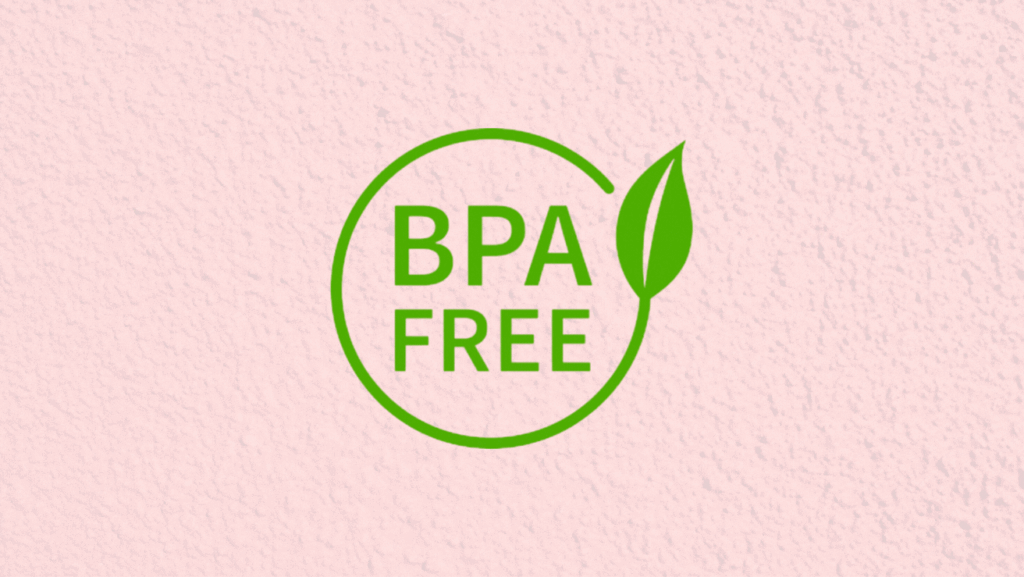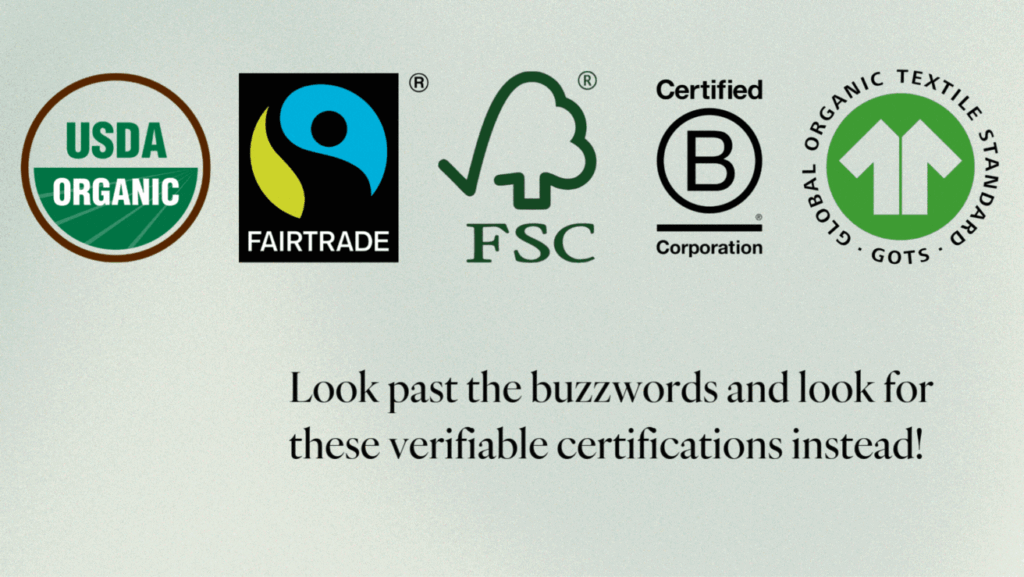
Have you ever been shopping for new, sustainable products and asked yourself, “Is this really sustainable?”. The brand may claim that it is, hitting you with all the buzzwords about being “eco-friendly”, “made with recycled materials”, and practicing “ethical manufacturing”, but how can you tell if it’s true and not greenwashing?
As consumers like you become more environmentally conscious, companies are eager to position themselves as eco-friendly. However, not all sustainability claims live up to the promises. Greenwashing—the act of misleading consumers about a company’s environmental efforts—has, unfortunately, become widespread, making it challenging to separate genuinely sustainable brands and those merely capitalizing on the sustainable movement.
Many companies use buzzwords like “eco-friendly,” “natural,” or “green” without offering concrete proof. Look for verifiable certifications like USDA Organic, Fair Trade, FSC (Forest Stewardship Council), or third-party eco-labels.

Some brands highlight one minor green feature while ignoring their overall environmental impact. For example, a plastic water bottle labeled “BPA-free” might sound eco-friendly, but at the end of the day, it still contributes to plastic waste.
A company may advertise one sustainable aspect while downplaying harmful practices elsewhere. For example, a clothing brand that uses organic cotton but relies on exploitative labor practices.

Some companies claim to be “carbon neutral” without actually reducing emissions. Instead, they rely on questionable carbon offsets, such as tree-planting programs that take decades to yield benefits.
Be skeptical of brands that claim to be “100% sustainable” or “the greenest company”. True sustainability is a continuous process, and responsible brands acknowledge areas for improvement rather than making sweeping, absolute claims.
H&M, a major fast-fashion retailer, launched its “Conscious Collection” to highlight eco-friendly practices, such as the use of organic cotton and recycled fabrics. The brand marketed this line as a step toward sustainability, appealing to environmentally conscious consumers.
However, the collection has drawn scrutiny from some critics and investigators who question the extent of its environmental benefits.
Reports, including a 2022 Quartz investigation, suggested that H&M’s sustainability scorecards—used to promote the collection—may have overstated the use of eco-friendly materials. Additionally, a class-action lawsuit filed in New York that year alleged the company misled consumers about the line’s environmental impact, though a similar lawsuit in Missouri was dismissed in 2023, with the court finding insufficient evidence of deception. Critics also point to H&M’s fast-fashion model, which relies on rapid production cycles and high output, as potentially negating broader sustainability goals. H&M has defended its efforts, stating it aims to improve transparency and reduce its environmental footprint over time.
This example highlights the complexity of evaluating a brand’s sustainability claims, where marketing, production practices, and consumer perceptions come into play.
Authentic sustainable brands provide detailed reports on their environmental impact, sourcing, and labor practices. Look for brands that publish annual sustainability reports and undergo independent audits.
Look for certifications from reputable organizations like GOTS (Global Organic Textile Standard) for fashion or B Corp certification for ethical business practices.

A truly sustainable brand prioritizes durability, ethical labor, and minimal waste. Brands that focus on circular economy principles demonstrate real commitment.
Companies that are serious about sustainability set measurable, time-bound goals with clear sustainability roadmaps and are upfront about progress.
Greenwashing can be deceptive, but by critically evaluating brands, you can gain the knowledge to support truly sustainable businesses. Always look for verifiable information, certifications, and brands that prioritize long-term sustainability over trendy marketing tactics.
Sources
[1] Reuters: ”Guidance for ‘sustainable’ claims after dismissal of H&M ‘greenwashing’ class action, https://www.reuters.com/legal/legalindustry/guidance-sustainable-claims-after-dismissal-hm-greenwashing-class-action-2023-06-02/
[2] Global Organic Textile Standard, https://global-standard.org
[3] B Corp, https://www.bcorporation.net/en-us/


Be the first to know about the newest additions to our shop and the latest news on our blog!
Veganist’s mission is to inspire and empower mindful living by curating high-quality, ethical, and vegan products that are kind to the planet, animals, and people.